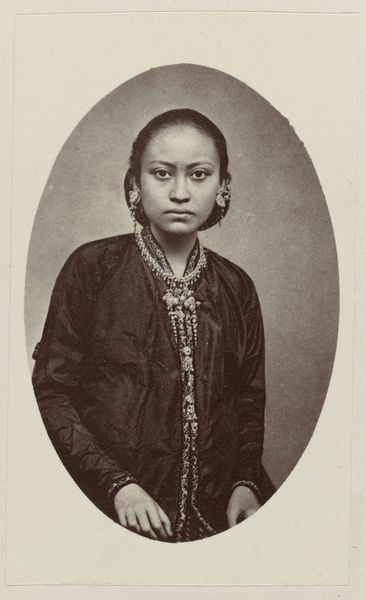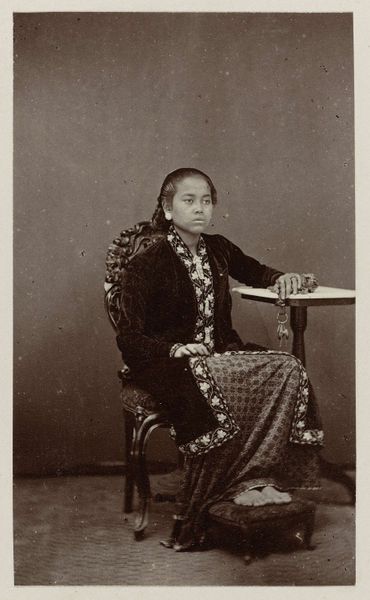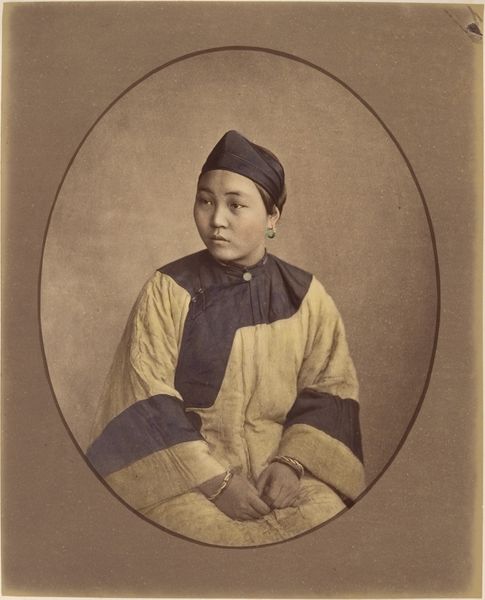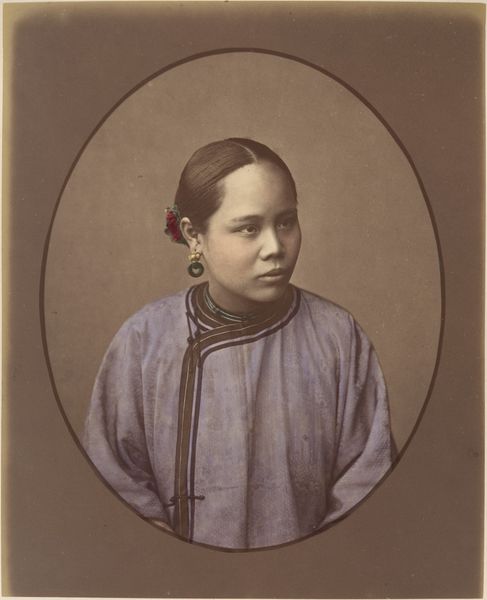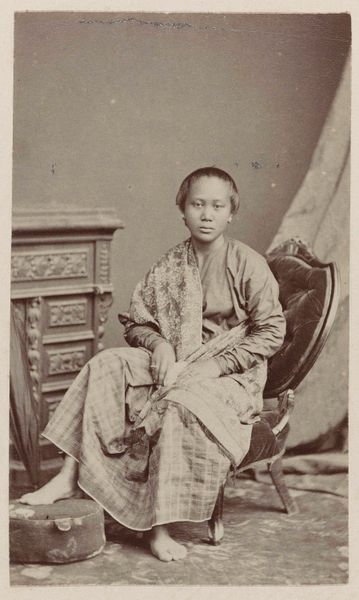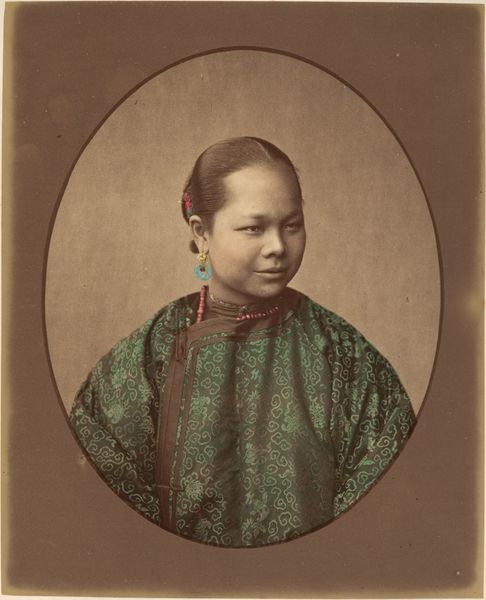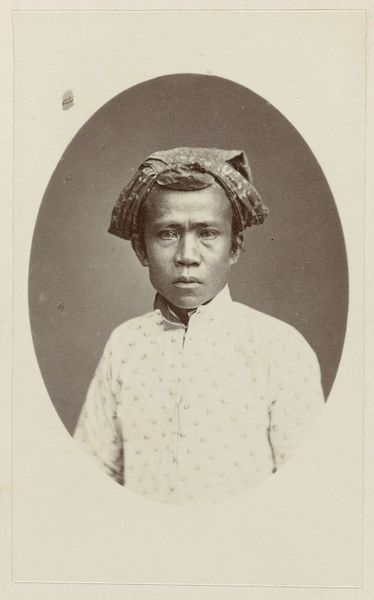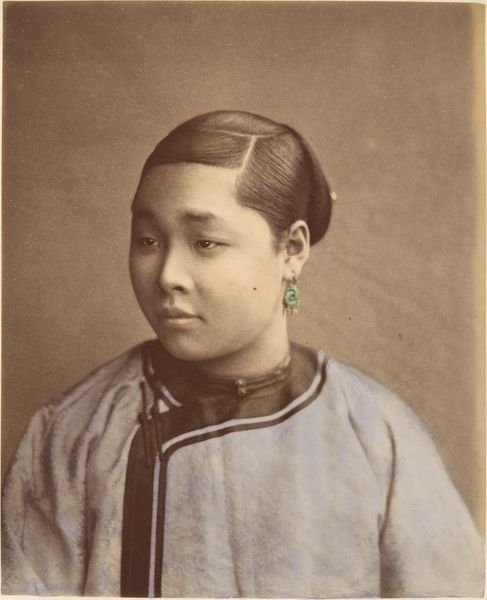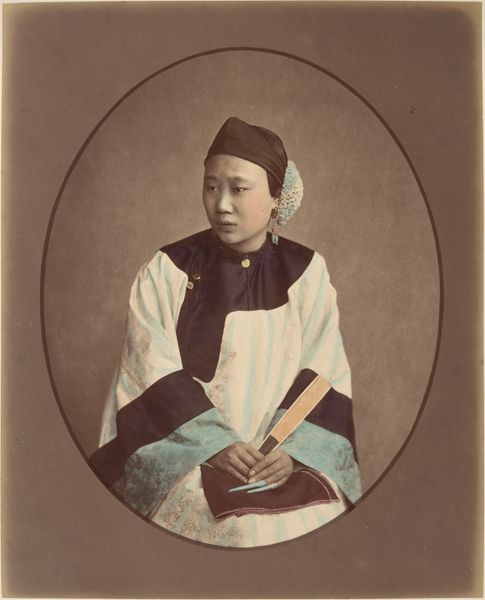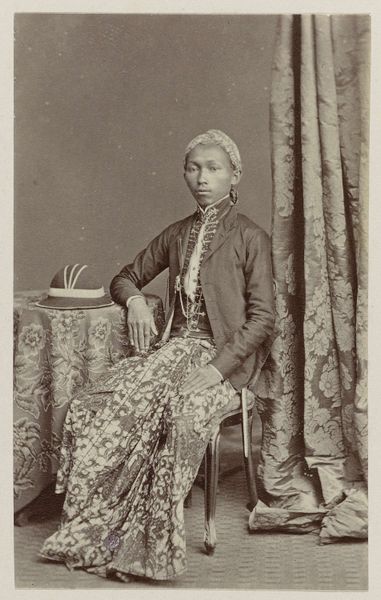
photography, albumen-print
#
portrait
#
asian-art
#
photography
#
portrait reference
#
albumen-print
Dimensions: height 92 mm, width 56 mm
Copyright: Rijks Museum: Open Domain
Curator: This captivating photograph, an albumen print made between 1868 and 1872, portrays Raden Ayu Ratoe Moestikaningrat, a wife of Pakubuwono IX, the Susuhunan—or ruler—of Surakarta. It’s credited to the studio of Woodbury & Page. What strikes you first about this portrait? Editor: The intricate patterning in her clothing immediately draws the eye, but the way she gazes directly out evokes a sense of serene formality, maybe even constraint. What's conveyed, if anything, about Javanese court culture at the time? Curator: It speaks volumes, actually. Notice the highly stylized batik of her *kebaya* blouse and *kain* wrap. The motifs aren't mere decoration; they are potent symbols indicative of her status and refined taste. Then there's the absence of ostentation, a controlled elegance typical of Javanese aristocracy, which links back to older visual cultures through shadow play or *wayang*. The *keris* brooch serves not just as ornament but an indicator of her family's martial strength, now refined into nobility. Editor: Absolutely. I am drawn to the politics of display, the calculated message broadcast by every detail. Considering that Woodbury & Page were a colonial-era photography studio, I wonder how their gaze shaped this image. Did they consciously depict an "exotic other," or were they striving for ethnographic accuracy, however problematic that may be? Was the photo used for the Dutch colonizers at the time? Curator: That’s a vital question to ask, particularly concerning power dynamics in representation. While commercial studios such as Woodbury & Page undeniably perpetuated certain colonial stereotypes for the Western market, such studios also provide access to intimate portrayals within different contexts, showing Javanese nobility through its aesthetic and spiritual bearings, a point reinforced by its connection to an array of indigenous art. The visual language reflects a sense of cultural continuity. Editor: Indeed, the continuities speak volumes. Although captured by a foreign studio, Raden Ayu is composed here to reveal power. As such, I keep wondering whether the photo and images like it could play a role in the construction, negotiation, or reaffirmation of identity for Javanese elite—and the communities that would see these photographs? Curator: An excellent point; photographs like this offered Javanese elites opportunities to construct their narrative within, and in subtle negotiation of, the colonial gaze. It allowed the preservation of identity and history and gave future generations a connection to its ancestors and what they stood for, visually. Editor: It reframes how we should look at visual history. I found a whole new view of it after our talk today. Curator: As have I. Thanks for offering a modern eye.
Comments
No comments
Be the first to comment and join the conversation on the ultimate creative platform.
